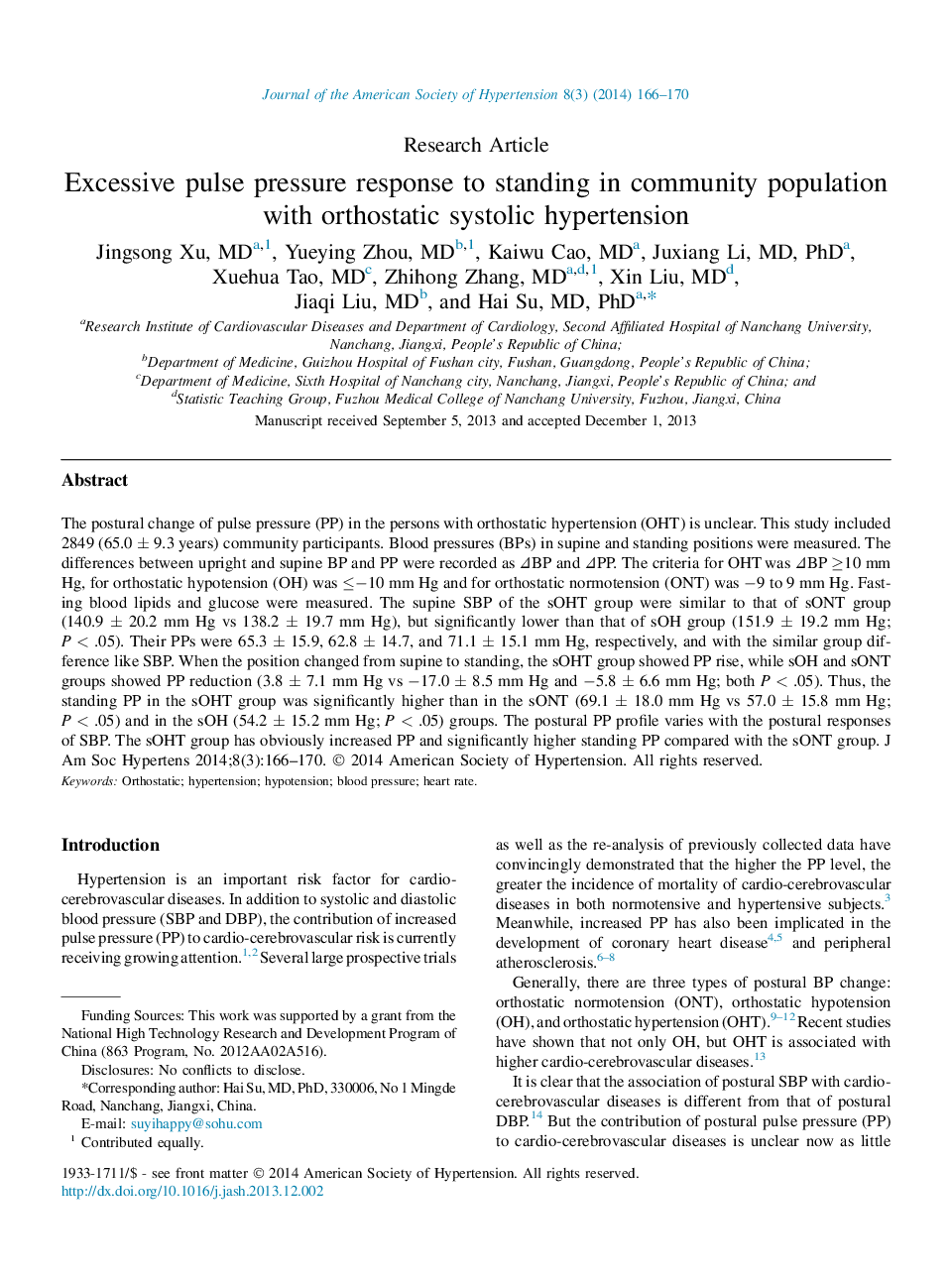| Article ID | Journal | Published Year | Pages | File Type |
|---|---|---|---|---|
| 2956733 | Journal of the American Society of Hypertension | 2014 | 5 Pages |
The postural change of pulse pressure (PP) in the persons with orthostatic hypertension (OHT) is unclear. This study included 2849 (65.0 ± 9.3 years) community participants. Blood pressures (BPs) in supine and standing positions were measured. The differences between upright and supine BP and PP were recorded as ΔBP and ΔPP. The criteria for OHT was ΔBP ≥10 mm Hg, for orthostatic hypotension (OH) was ≤−10 mm Hg and for orthostatic normotension (ONT) was −9 to 9 mm Hg. Fasting blood lipids and glucose were measured. The supine SBP of the sOHT group were similar to that of sONT group (140.9 ± 20.2 mm Hg vs 138.2 ± 19.7 mm Hg), but significantly lower than that of sOH group (151.9 ± 19.2 mm Hg; P < .05). Their PPs were 65.3 ± 15.9, 62.8 ± 14.7, and 71.1 ± 15.1 mm Hg, respectively, and with the similar group difference like SBP. When the position changed from supine to standing, the sOHT group showed PP rise, while sOH and sONT groups showed PP reduction (3.8 ± 7.1 mm Hg vs −17.0 ± 8.5 mm Hg and −5.8 ± 6.6 mm Hg; both P < .05). Thus, the standing PP in the sOHT group was significantly higher than in the sONT (69.1 ± 18.0 mm Hg vs 57.0 ± 15.8 mm Hg; P < .05) and in the sOH (54.2 ± 15.2 mm Hg; P < .05) groups. The postural PP profile varies with the postural responses of SBP. The sOHT group has obviously increased PP and significantly higher standing PP compared with the sONT group.
